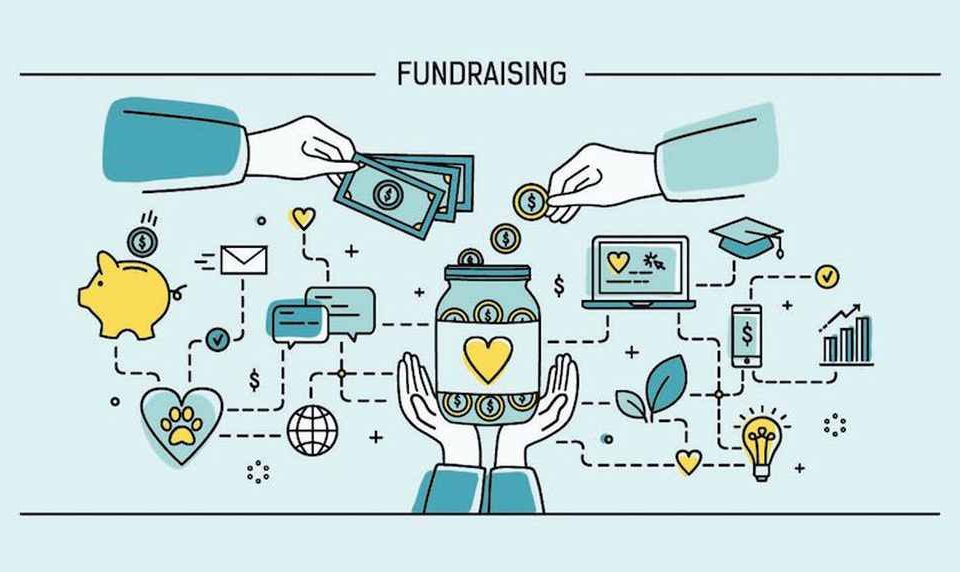Fundraising in 2022 Is No Picnic — Here’s What Will Help

A Startup’s Guide to Effective Pre-fundraising PR
2021 was a record year in terms of venture capital. Annual global investments amounted to $644 billion — almost twice as much as 2020. Average checks considerably grew, same as the competition between startups, making it essential for companies to bring their absolute A-game to succeed in their fundraising efforts.
Well-executed external communications do exactly that: they help drive investors’ attention to the company’s achievements and potential. They will help you increase visibility and stand out from the rest of the crowd, subsequently helping you close the deal faster, better, and on favorable terms.
In light of this, here are some points you should consider to help you nab a great deal.
How PR Impacts Different Rounds of Funding
VCs always invest for the long term. They expect their investments to grow, so just being “innovative” won’t be enough; you need to build confidence in the long-term success of the business. They need to trust you and rely on you.
These are the messages you need to convey — way before you start sending out your pitch deck. Visibility in the public field is extremely valuable for startups. The value created by the PR team is difficult to quantify, but it ultimately affects how fast will the lead investors jump in and how much would they be willing to invest.
After closing the first Seed Round, the startup’s life begins: you’ll be setting up key operations, launching ad campaigns, and hiring the right team. At this early stage, you won’t yet have any high-profile partnerships, well-known advisors, or significant case studies to build upon. Investors won’t expect any of this at the initial stage, which is fair enough. However, what they will look at is your leadership team, its core strengths and weaknesses, and what early results they’ve achieved by working together.
Later, on the growth stage, the investors will keep a bird’s eye view on the growth rates of factors such as your sales, revenue, and scaling. In other words, at the early stages, VCs invest in a team, while in later stages, they invest in a company. That is exactly what you should base your PR on and then deliver all the right messages along the way.
What to Focus on in Your PR Activities
Team
In the Seed Round, the team plays a key role in the investors’ decision, so communicating its expertise is key. However, this is important at all stages.
Here are some things you should talk about:
- Diverse backgrounds. Investors look for diversity in teams, and they will prefer teams that consist of a mix of professionals from different backgrounds. For example, a startup with a founding team of an engineer, marketer, and sales rep will have a huge advantage over a team of three engineers. Different backgrounds will allow the founders to complement each other, which greatly increases the chances of building a successful business.
- Entrepreneurial experience. Previous experience in building a startup is a strong advantage. Experience is always a priority — you’ll avoid some mistakes and challenges because you’ve met them before.
And don’t limit yourself to one spokesperson. If the company has several founders, each one can become a spokesperson in their field of expertise.
Expertise
Deep expertise in the industry and market trends is a must. This is a great opportunity for early-stage startups since establishing your expertise doesn’t require any startup traction or case studies.
For example, you can publish opinion columns with market reports, analytics, and forecasts. An AdTech startup founder, for instance, can put together an opinion column, debunking the myths on data privacy concerns in AdTech products, or offer expert analysis on how 5G technology impacts the development of the company’s products.
Relevance
Compliance with trends and current social issues basically shows why NOW is the best time to invest in your startup. Some examples of today’s trends include healthtech, molecular gastronomy, vegan/cruelty-free development, sustainability, etc. A number of funds even have certain KPIs for investing in companies in the sustainability domain. Use it!
Do some brainstorming on how your startup idea can tie into current topics and trends. Once you think of a connection, integrate it into your communication. For example, 3DLOOK, the creators of leading virtual shopping solutions, helps brands reduce product returns while increasing e-commerce conversions and sales. The first and obvious message is the efficiency of e-commerce, but on a bigger scale, 3DLOOK’s solutions help reduce unnecessary emissions caused by reversed logistics — an important sustainability component.
That isn’t to say that you should just focus on ecology and sustainable development; there are other important new trends to think about as well. For example, diversity and inclusivity are widely trending, especially in the VC community. Five years ago, the investment sphere was a “men’s club from downtown.” Now the global investor community has noticed this injustice, and the situation is rapidly changing. Use this, if relevant to your team.
No matter what strategy you use, always stay genuine. Don’t try to convey the global standard of diversity if the team is based in a region with a slightly different demographic. Remember, you don’t need to invent these values, you need to define them, and then articulate and emphasize them.
In addition to standard communication, awards will come in handy. For example, Whitney Cathcart, co-founder of 3DLOOK, was shortlisted for the Women in IT Awards in three categories. Such awards attract a lot of attention, and meanwhile, competition is still lower. Remember: to win awards, you need to apply for them. Don’t wait for the jury to notice you!
Traction and Case Studies
Showcasing results, traction, case studies, and partnerships with household names are important for later stages, as they are concrete evidence of the startup’s success. No strong slogan, bold mission, or tagline will work as well as real measurable results.
For example, when talking to CNBC, Vadim Rogovskiy, CEO of 3DLOOK shared how the company’s products helped a client cut product returns and increase e-commerce conversions. As a result, the case study was featured in a media outlet with 130 million monthly readers. Rogovskiy said, on the matter, that “…stories about how great your product is doing are nothing without proof in numbers. Any communication must be effective, so use clear indicators of progress: for example, the staff has doubled, and profits have increased by 55%. The only exception is the valuation of the company. By not disclosing it in the press, you will be more flexible in negotiating with investors. ”
Growth also needs to be shown concretely and dynamically. Has your revenue grown 10 times a year? Wonderful! However, was the baseline $100 a month? At the same time, if your revenue increased by 10 times and exceeded $10 million ARR, then this is clearly a success and significant growth. And, of course, do not exaggerate. Due diligence will uncover the truth, and the reputation will not be saved.
Bottom Line
In conclusion, please remember that you shouldn’t just focus on PR before fundraising. You need to build and focus on constant strategic communication tied to the company’s mission and expertise. If you diligently and consistently communicate your company’s values and potential, you will have no issues in building trust and a reputation for your company and attracting high-profile investors and partners in the long run.
Author: Nadya Movchan, founder of Movchan PR, head of PR at 3DLOOK.

